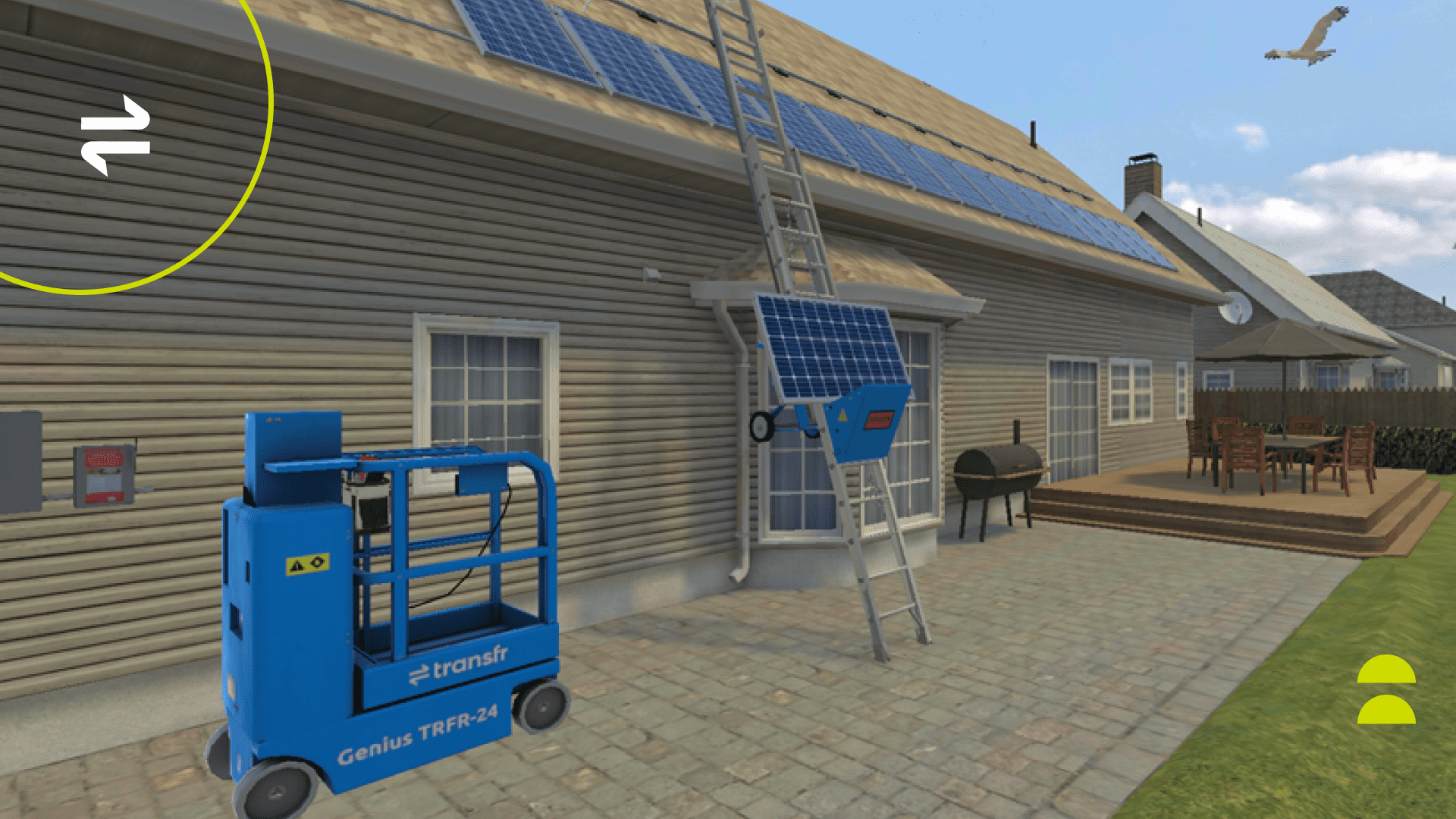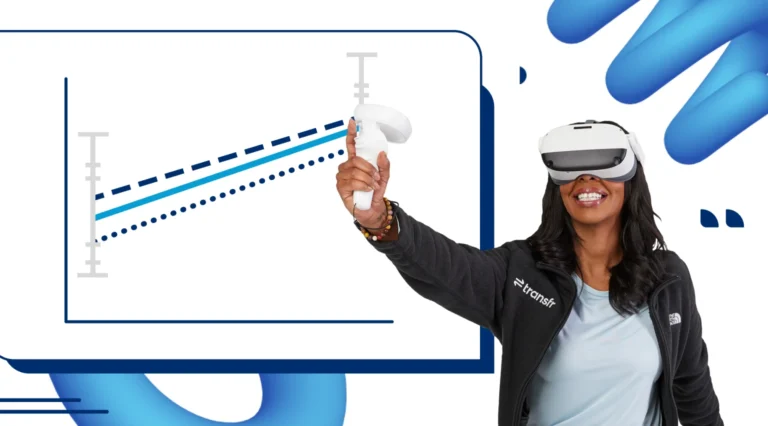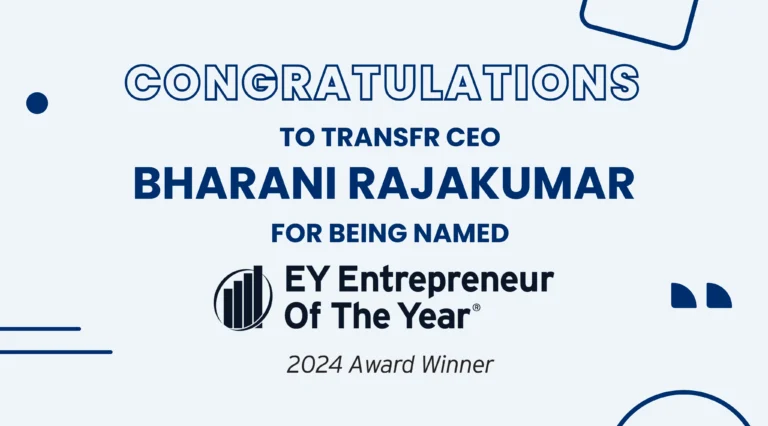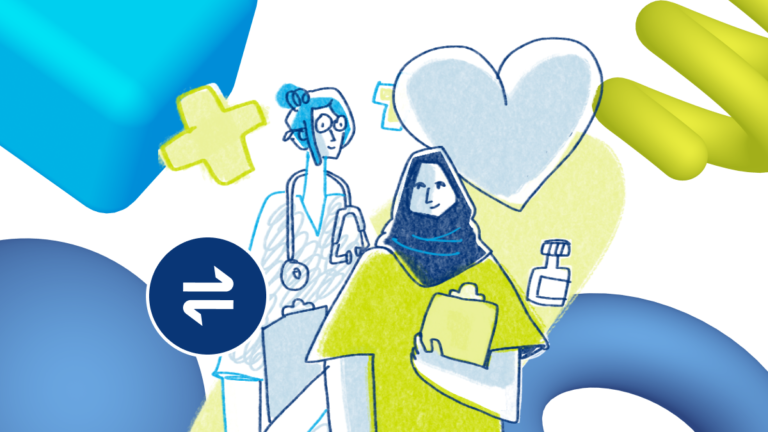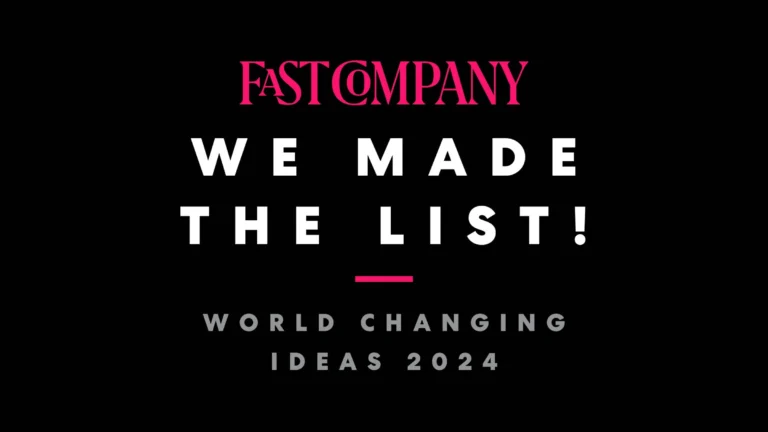It takes a variety of tactics to help students and job seekers of all kinds find the right career path and figure out how to access the training and support that they will need to make their dreams into reality. Transfr partners across the USA are integrating VR into their career search and work-readiness programs to help people get deeper insights into what the requirements and pathways are like for different jobs.
Ryan Ott, Executive Director of Big Ideas (a nonprofit in Minnesota focused on raising awareness of trade jobs) and Transfr’s own Amanda Longtain (Director of Economic Development), joined us on Upward, the Transfr podcast to discuss the ways VR is being used in the field to help students explore job possibilities and start on their pathways to career success.
Engaging students with VR
VR is engaging — full stop. Don’t just take our word for it; check out our collection of in-depth VR efficacy studies to see how our world-class research team is collecting insights into VR effectiveness. Immersive VR experiences help students and job seekers get realistic insights into what a day in the life of a given professional would be like. Ryan and his team leverage VR simulations and meaningful connections with students in the field to drive interest in trade careers.
“Offering VR exploration into skilled trades for younger age groups gets them motivated,” says Ryan. Regarding the teams they have out in the field, Ryan adds: “Everyone we deploy at our events is [a licensed contractor] — we have firsthand knowledge about skilled trades.”
Drawing connections between students’ experiences in VR simulations and Ryan and the team’s experiences from decades in the field is a powerful combination. It takes multiple interactions with a student to help them make an informed decision on what career they want and fill in some steps on their path to their desired job.
“I really like talking to seventh and eighth graders,” Ryan says regarding helping students craft their training pathways. “When we do a spring event, we want to get them thinking about next year’s curriculum and the electives that they might have available to them. Do you have a shop class next year, etc.?”
Having an interested party help them connect the dots can make a big difference in how successfully a student navigates their school system. Data can also be a powerful tool for empowering counselors and CTE instructors to have these conversations as well.
Using data to increase impact
Giving students and job seekers access to a wider range of career options and feeding their curiosity with conversations with seasoned tradespeople go a long way in helping guide people onto the right pathways for them. Data also plays a role in this process, giving counselors and educators deeper insights into which careers hold the most interest for the people they serve.
After users explore various careers in the Transfr headset, they can indicate their level of interest in the role. Administrators (like Ryan and his team, or instructors and counselors in a school, etc.) can dig into student responses via a robust Transfr dashboard to better understand how to help students craft their educational plans.
“[Access to data] enhances the output [of events] too,” Ryan says. “A week or two [after the event], we can review the data and say to instructors, ‘This is the information that we got…how can you guys use that information to better connect that with your people?’”
So much of the modern tech world is about creating and collecting data. But despite lofty claims, oftentimes it’s hard to say what positive impact (if any) that data is having. Transfr takes data privacy and security very seriously, in our product and the VR efficacy research we do. We’re also passionate about using data to help empower students to make more informed decisions.
“I love that [Ryan and team] are thinking about the significance of data,” Amanda says. “And the fact that they’re acknowledging that that could help bridge a really important gap and it’s another valuable service that they get to offer to all of the partners that they work with.”
Industry partners provide opportunities
One more piece of the career-path puzzle that organizations like Big Ideas help fill in for students is connections to industry partners. It’s one thing to show students and job seekers a job they might like and even to point them in the direction of a training program and/or the basic skills they’ll need to do the job. Connecting those students to possible employers (or apprenticeship/on-the-job training opportunities, etc.) takes this to the next level.
“[We have industry partners who] come in to say ‘Hey, how can we be helping you?’” Ryan explains. “One of our partners has an apprenticeship program where they’ll teach you diesel mechanics right in-house — you don’t have to go to technical college. It’s learn while you earn… there are just some amazing career opportunities to be had out there.”
Getting students to think outside of the four-year university track and helping them see opportunities in their areas where they can start building their careers drives home to students that they can do this! When students get this kind of support, it changes their whole way of thinking, Amanda explains, giving voice to a hypothetical student, filled with hope for their possible future:
“I feel good about myself. I feel like I have this positive future ahead of me! I might be able to stay in my community and start a family, buy a house… all the things that I want to do!”
